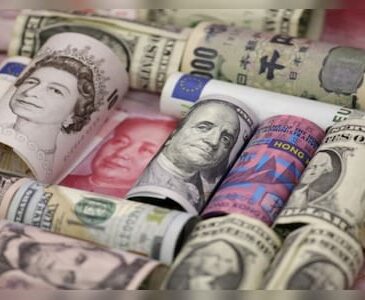Unlock the Editor’s Digest for free
Roula Khalaf, Editor of the FT, selects her favourite stories in this weekly newsletter.
The writer is visiting professor of international economic policy at Princeton University and author of ‘India is Broken: A People Betrayed, Independence to Today’
While other Asian policymakers, such as those in South Korea and China, have strategically used sizeable depreciations of their currencies to bolster export competitiveness, Indian elites bemoan every infinitesimal decline in the rupee’s value as a national humiliation. A unique economic and political confluence first entrenched this bogus pride in the country’s psyche in the mid-1960s. And since the 1990s, the country’s corporate leaders and new rich have wanted to maintain a strong rupee. As a result, the country’s export-based growth has suffered, as have jobs for low-skilled workers.
India is triply handicapped in exporting manufactured goods: it has a poorly educated workforce, few women in its factories and an overvalued currency. Education and female labour force participation are key to raising productivity, but take years to achieve. Today, only a much cheaper currency — about 100 rupees per dollar rather than the current 82 — can spur Indian exports. It is low-hanging fruit.
In a rare sane moment in 1949, a newly independent India devalued the rupee from Rs3.3 to Rs4.8 per dollar, bringing relief to its uncompetitive economy. Indian manufacturers could earn profits even when they lowered dollar sale prices, which helped increase exports. Costlier imports slowed import growth, helping reduce the current-account deficit. But the task was never completed. With low productivity and high inflation, India could not match countries such as Japan in labour-intensive manufactured exports. The World Bank and the IMF financed India’s large current account deficit, creating the illusion that it did not need currency devaluation.
When those two institutions finally threatened to stop financing that deficit, the country’s officials foolishly negotiated the rate to Rs7.5 per dollar in June 1966. This too-little-too-late devaluation did not compensate for the rise in domestic production costs. Taiwan and South Korea raced ahead, helped by currency devaluations; Indian exports languished.
The perceived failure of the 1966 devaluation to spur exports forever tarnished Indian belief in an activist exchange rate policy. Rather than encouraging more aggressive nominal devaluation to offset the rise in production costs and thus achieve real depreciation, devaluation “by stealth” was always too little, too late. In the 1980s, China used aggressive exchange rate depreciation as key to its monumental export push.
India’s 1991 financial crisis was another all too brief moment of sanity. Authorities devalued the rupee in July 1991 and let it float in March 1993. But new forces strengthened the currency. Software exports and remittances from workers in the Middle East had a bolstering effect. More importantly, once global money managers began funding large Indian companies, a strong rupee helped that small elite minimise the costs of repaying international creditors and investors. A strong rupee also helped aspirants to elite status shop for fast cars and handbags, often in Milan and Singapore.
Reflecting the national sense of pride and elite preference, political gamesmanship conditioned policymakers to focus on stemming the currency’s decline. In 2013, prime ministerial candidate Narendra Modi bemoaned the fall in the currency, saying: “Our rupee has been admitted into the ICU.” After Modi became prime minister, hot money flowed in and the rupee appreciated briefly. But when it fell again, leaders of the opposition trolled the government by repeating Modi’s phrase: the rupee was in the ICU.

Sadly, the nominal depreciation was not enough. According to the Bank for International Settlements, between 1994 and now, India’s domestic costs of export production have risen by about 60 per cent relative to competitors. As a result, the real exchange rate, which determines international competitiveness, has strengthened by 12 per cent. Vietnamese manufactured exports, following the East Asian playbook, are poised to exceed India’s manufactured exports.
India’s accumulated cost-of-production disadvantage requires the rupee to drop to about Rs90 per dollar; Rs100 per dollar would provide an ideal cushion. But Indian authorities continue to avoid an activist exchange rate policy, and rely on dodgy policy tools: tax cuts and subsidies for corporate India, tariff barriers to shield inefficient producers and weaker labour protections. Such measures simply make the rich richer, while doing little for low-skilled workers. An exchange value of Rs100 per dollar would temporarily give Indian exports a much-needed boost. The time to act is now.


